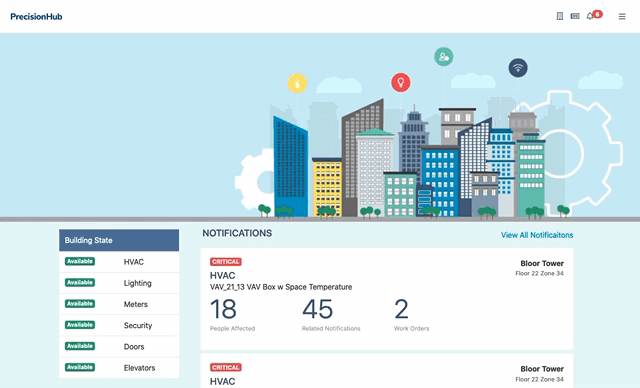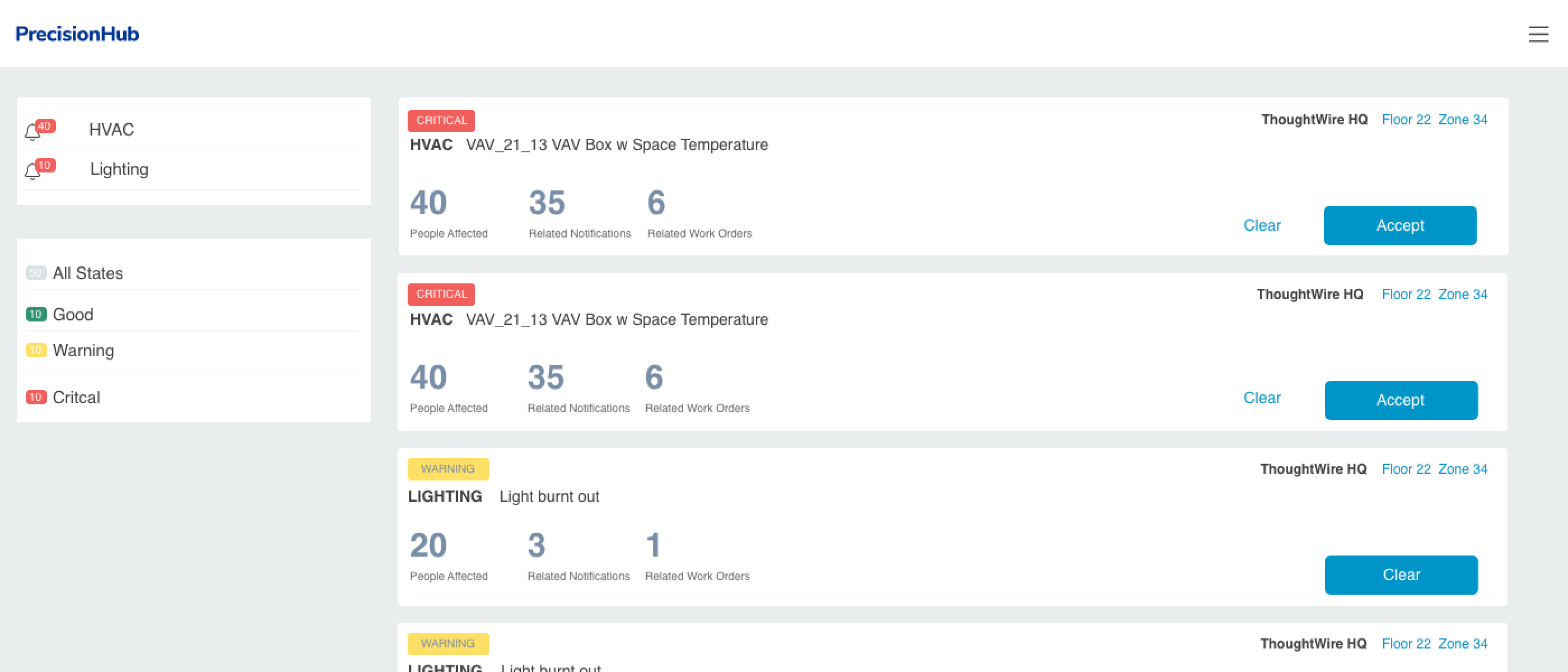

Case Study: Smart Notifications
Smart notification is a feature that connects work orders to specific subsystems within a building. The feature aggregates data, analyzes it, and generates alerts based on predefined criteria.
These alerts are prioritized by severity, enabling Facility Managers to act efficiently. Users can create maintenance requests directly from the alert, streamlining workflows and reducing manual entry.
This empowers building managers to respond proactively, increasing operational efficiency and reducing downtime risk.
The team included a Director of Product, Product Manager, myself (Senior Product Designer), Senior Data Analyst, CTO, and engineers.
The first implementation gave Facility Managers a centralized view of alerts with key details like failure reason, date, and floor. Accepting a notification cleared it from the list.
Operations Manager: Gains visibility into maintenance priorities, assigns tasks efficiently.
Asset Manager: Tracks equipment history to inform capital expenditure decisions.
Property Manager: Ensures tenant satisfaction and timely maintenance responses.
Facility Manager: Monitors performance, reduces downtime, and improves efficiency.
Maintenance Manager: Assigns and tracks tasks, improving staff coordination and timeliness.
The company needed to reduce reactive maintenance costs and improve health and safety. They wanted real-time insights with prioritized alerts and system-wide visibility.
Managers gained real-time monitoring, proactive issue detection, and improved decision-making with map-based system access and automated alerts to tenants and staff.
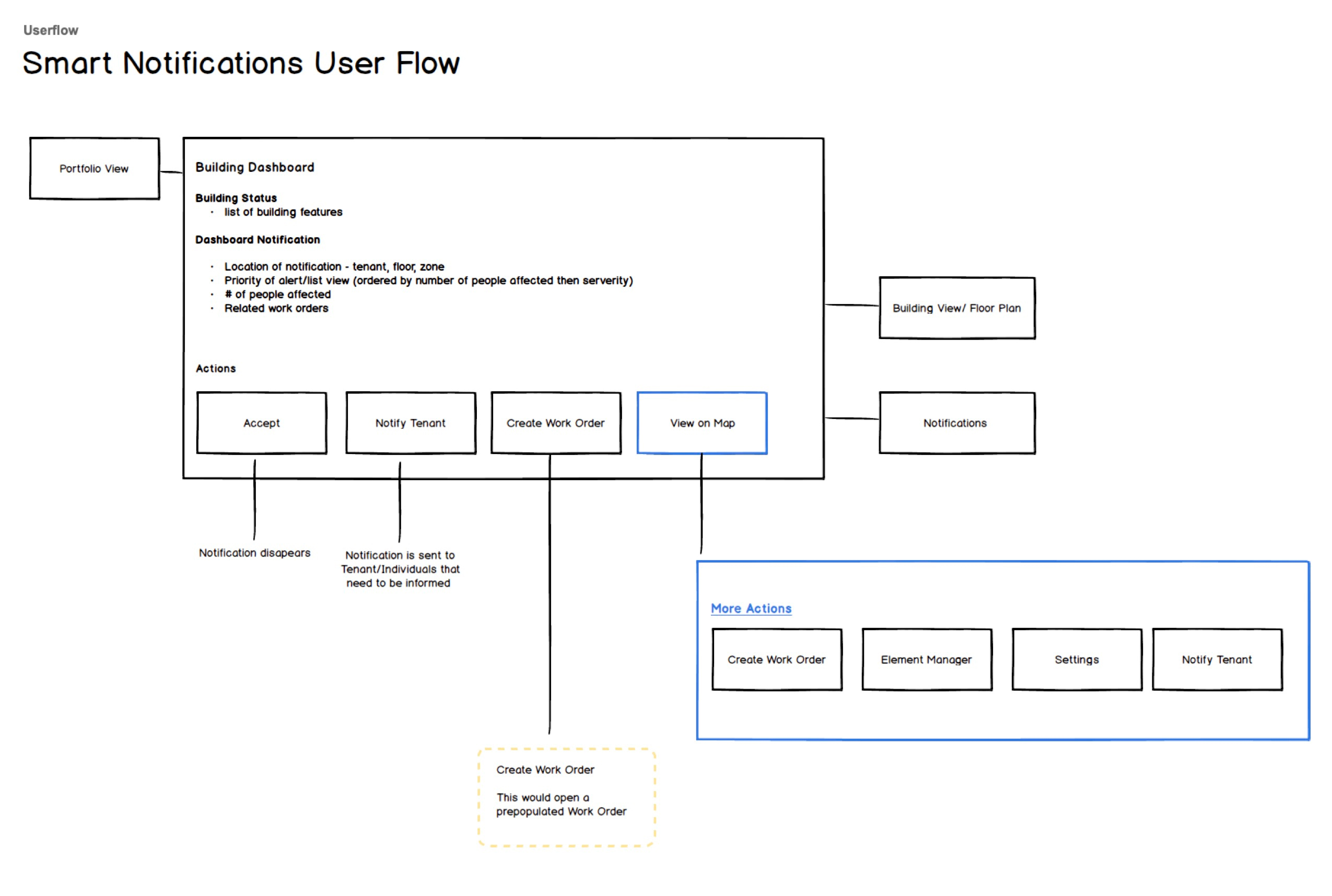
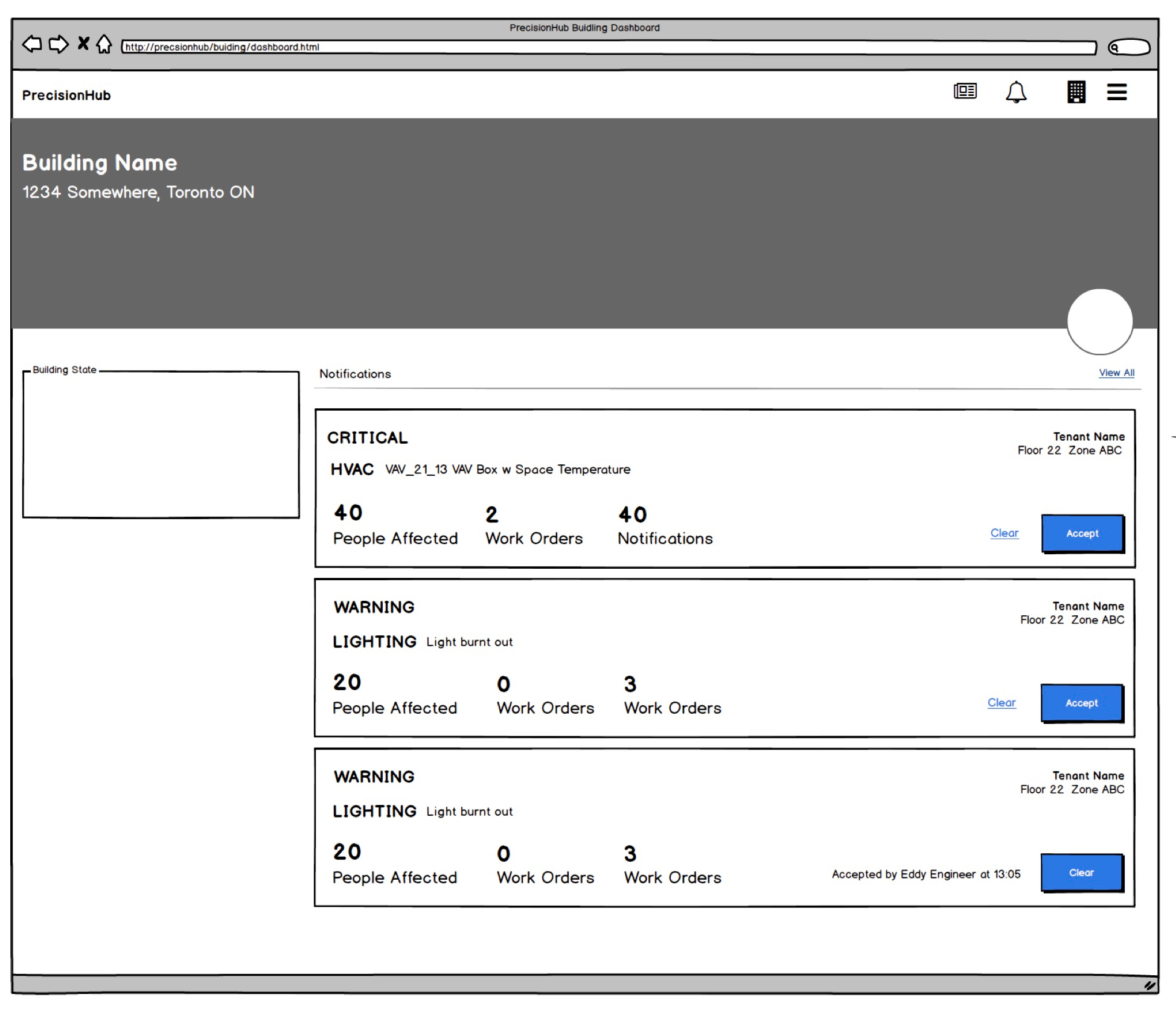
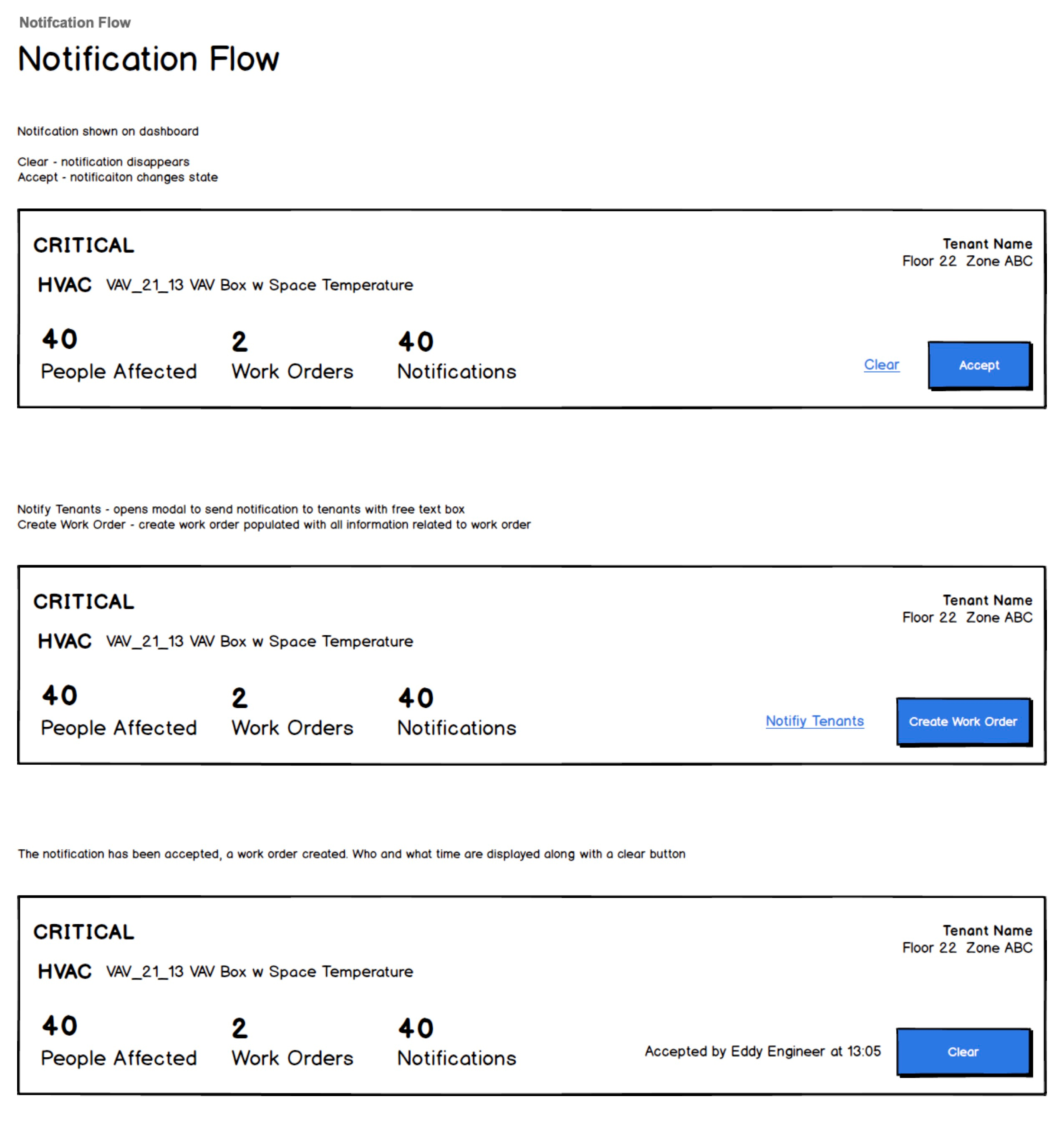
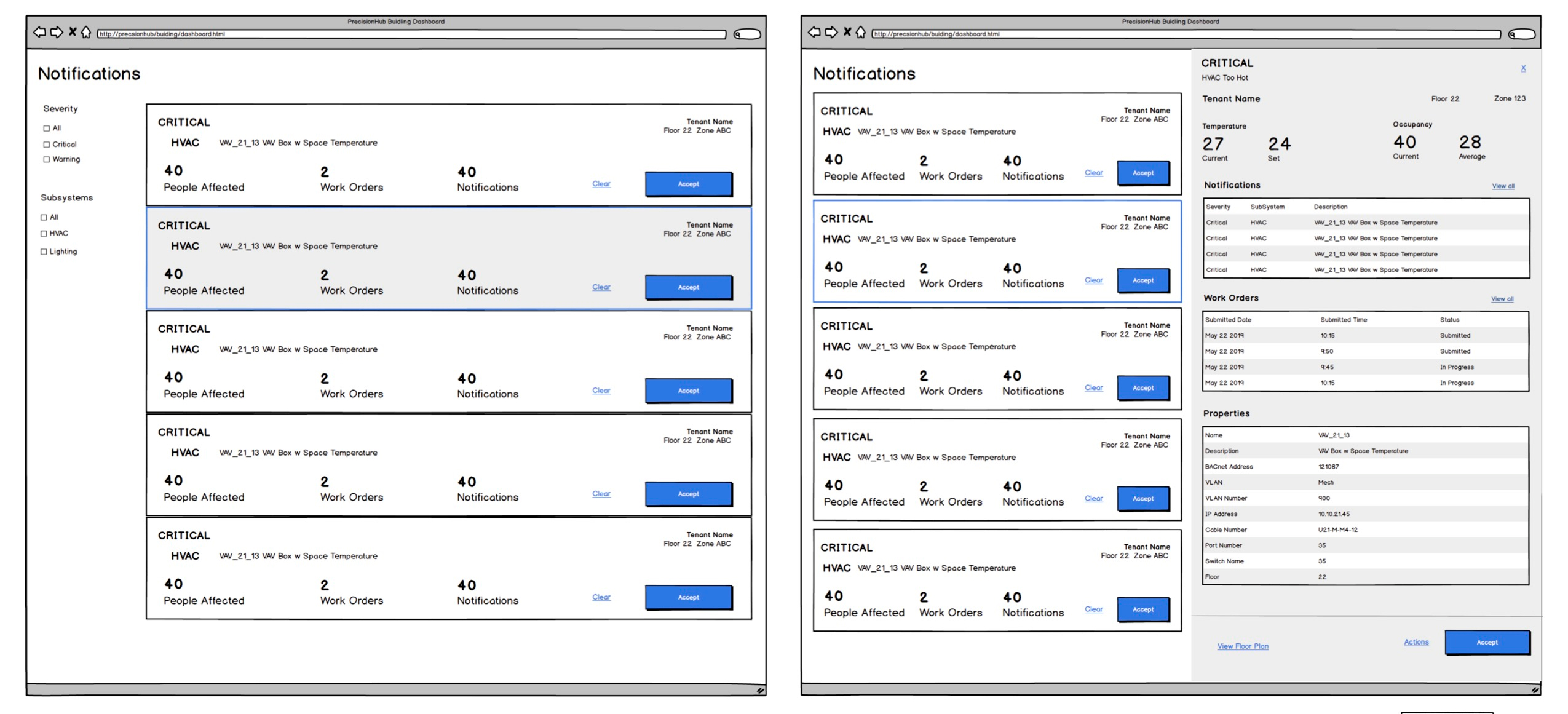
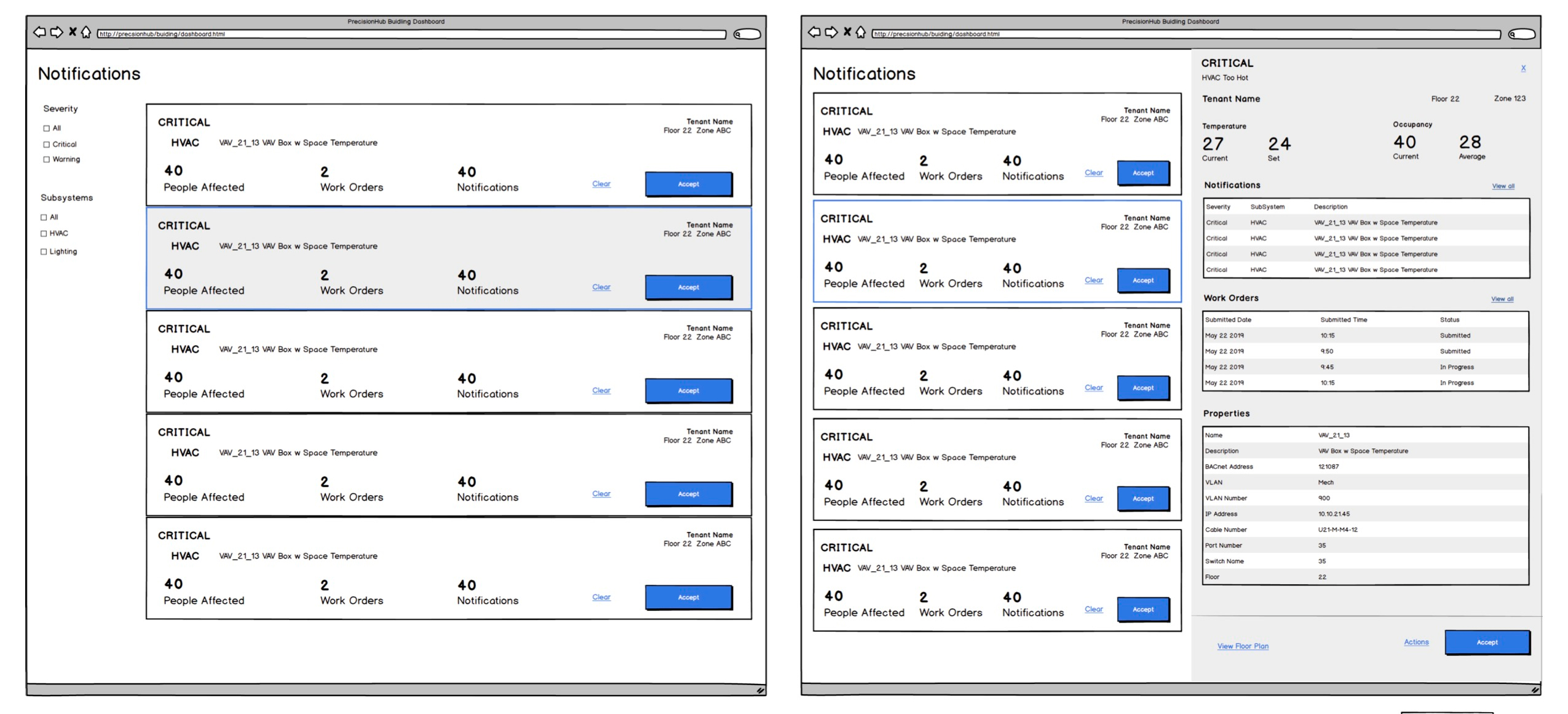
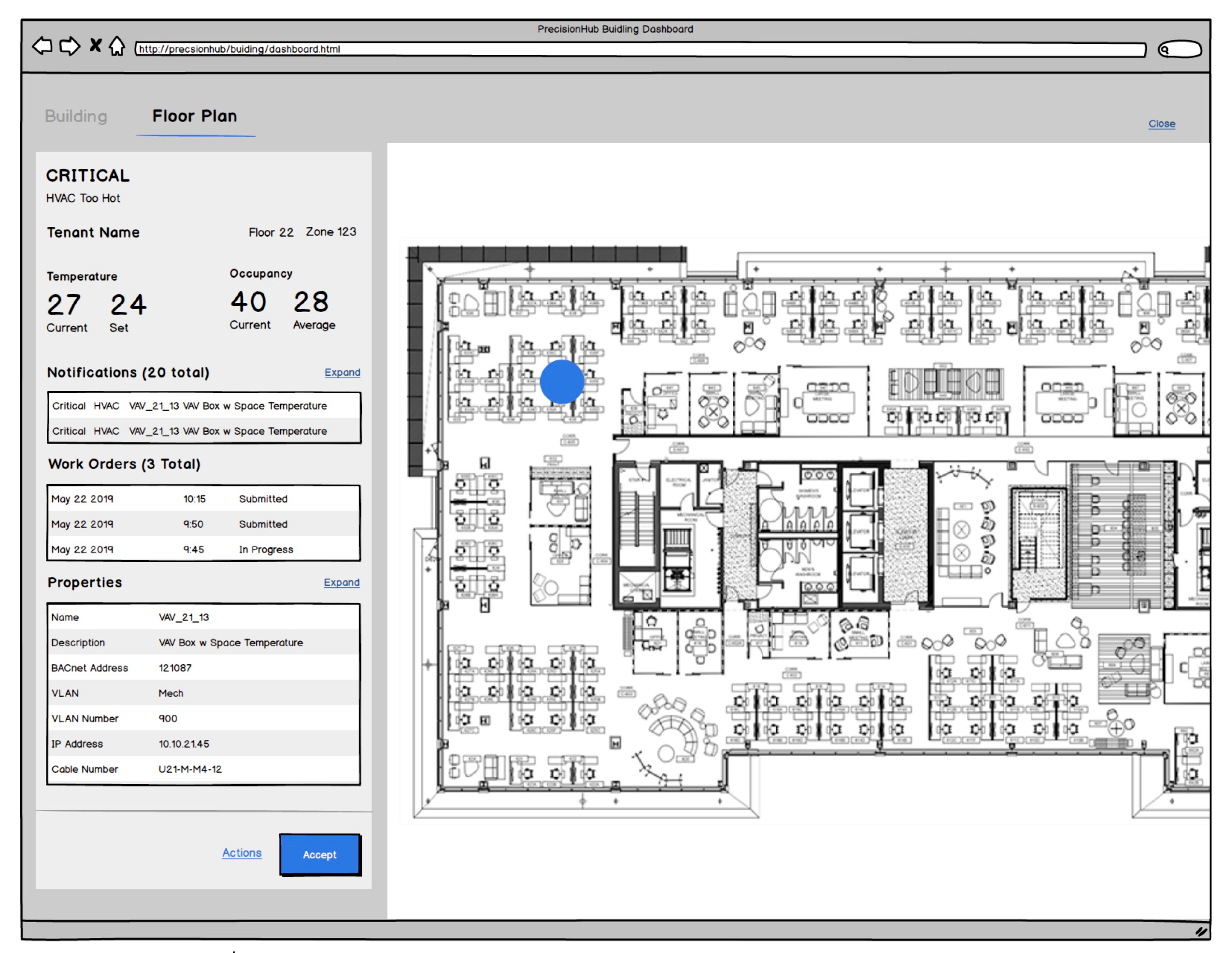
A working prototype was built using HTML, CSS & JavaScript.
